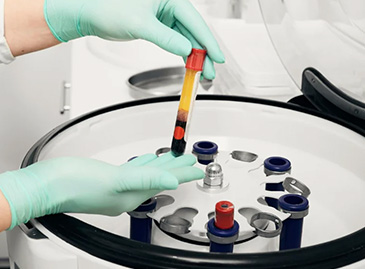
Pacemaker Replacement Surgery: Reasons, Types
A pacemaker replacement is a surgical procedure to change the electrical impulse generator device in people's chest. While there are many reasons for doing this, let us look at what a pacemaker does. Pacemakers are implants your doctor may put into your chest to support and assist your heart's electrical system.
When the heart has an automatic electrical system that keeps the heart beating and functioning, damage to this system in the heart causes many problems for people. However, the heart needs to be helped with a mechanical device. This device works with the heart to keep people alive for years.
This device is called a pacemaker. The Pacemaker is the part of the heart where the automatic electrical signals come from. The pacemaker device gets its name from this part of the heart.
Component of Pacemaker
The Pacemaker has two (2) main components: the pulse generator and the leads. A pulse generator helps generate the electrical signals to support the heart's function. At the same time, the leads carry these signals to the heart to correct any wrong signal in the heart. However, have I told you that this device uses a battery? The Pacemaker has a battery that powers it. These batteries are powerful and usually last for five to ten years.
But do these electronic devices work like the normal heart? Yes. People who have this device in their chest live an everyday life. They can spend much time with their parents, relatives, kids, and partners. They go to their offices and get their jobs done. Some people may also sit with their grandkids and play with them. But like other patients, they need regular monitoring and scheduled checkups.
In addition, over time, people using pacemaker devices may need to replace them. But opening people's chests and putting a new pacemaker into their chests is challenging. The decision must be weighed thoroughly by the doctor. There must also be a clear indication to change the Pacemaker.
Types of Pacemaker
Not all pacemakers have leads. Here's a list of the types of pacemakers you should know:
Single chamber:
One lead attaches to a section of the heart.
Dual-chamber:
It has two leads. These leads connect to two sections of the heart.
Biventricular Pacemakers
Why you may need Pacemaker Replacement
Since pacemaker devices help people live quality lives, why must they be replaced? Here are a few reasons why they can fail and should be replaced.
Battery Exhaustion:
This is the main reason for a pacemaker replacement. The pacemaker battery lasts for 5 to 10 years on average. But exhaustion before the scheduled date is a good reason to change the Pacemaker. Some batteries get exhausted prematurely. Battery exhaustion is quite an emergency that will require a lead replacement.
Incomplete Fracture of Lead Electrodes:
Remember that the leads carry the generated signals to the heart to help it. These electrodes can get fractured incompletely in different areas. Fracture to the leads is an indication of pacemaker replacement.
Lead Dislocation:
The position of the lead can change in the day-to-day life of a person with a pacemaker. Some leads can also be abandoned in the right ventricle (where they shouldn't be) and cause many problems.
Infection of Pacemaker Pocket:
The pacemaker pocket is a subcutaneous part of the body beneath the skin. Your doctor places the pacemaker device here to assist your heart. Infection of this area can cause the Pacemaker to fail. Pacemakers that fail because of pocket infections will require replacement.
Pacemaker Pocket Hematoma:
Furthermore, a hematoma is a collection of blood. The body parts under the skin that house the Pacemaker can be bruised and collect a lot of blood. The massive blood here damages the Pacemaker.
Improved Devices with Better Features:
Science advances fast, and scientists are making new devices as the days go by. Your doctor might suggest getting an improved pacemaker to replace the previous one.
Lastly, the reasons above can be life-threatening if you don't notice them quickly. So, how do patients know they need a pacemaker replacement?
How do people know they need a pacemaker replacement?
People with pacemakers in their chests need regular close monitoring by their healthcare team. They may also visit the hospital for routine checkups. These visits monitor the Pacemaker's overall health, including the battery, leads, and pulse generator.
Furthermore, during these visits, your doctor will discuss the replacement time for your pacemaker batteries and how to prepare for it. But if the Pacemaker fails for another reason, the symptoms treated by the pacemaker return. Some of these symptoms are:
- Dizziness
- Heart palpitations
- Fainting
- Lightheadedness
- Chest pain
- Pain, redness, and swelling at the pacemaker site.
- Shortness of breath.
You should look out for these symptoms if you have a replacement or know someone who does.
How many times can your doctor replace your pacemakers?
There is no definite answer to this question. Here's why: pacemaker batteries can last for 8-10 years. Also, patients go for routine checkups every 3-12 months. If the batteries fail, the pacemakers will get a replacement. Also, replacement surgery is scheduled if any abnormality is picked up at the routine checkups.
Pacemaker replacement is an expensive surgery. Even if it can be replaced readily, the replacement cost is a rugged mountain to climb.
How Do Doctors Replace Pacemakers?
Doctors are in charge of removing and replacing pacemakers. This procedure can be straightforward or complex, depending on why the Pacemaker requires a change. Generally, your doctor can carry out this procedure in an outpatient setting. They may administer local anaesthesia to the areas surrounding the Pacemaker. The doctor makes incisions (cuts) over the Pacemaker.
Furthermore, your doctor examines the old Pacemaker. The pulse generator leads and batteries will undergo thorough observation. Usually, the pulse generator may need a replacement, or the battery may need a new one. However, your doctor will remove the old pulse generator and attach a new one to the leads.
In addition, this surgery should take about two hours if it's straightforward. However, it could take more hours if the lead needs replacement and may require more monitoring after the surgery. You will get close monitoring after the surgery and be given specific instructions. Your doctor may discharge you to go home the same day or the next day after the procedure. The doctor monitors the effectiveness of the new Pacemaker.
Lastly, patients who have just replaced their pacemakers should avoid electrical equipment with high electromagnetic fields. Avoid pieces of equipment like Induction Knobs, MRIs (Magnetic Resonance Imaging), and TENS (Transcutaneous Electrical Nerve Stimulation).
What are the Side effects of Pacemaker Replacement Surgery?
Did you get a replacement surgery? Or do you know someone who just had it, and you're worried if they might have side effects? Here are a few things to watch out for:
Allergic reactions:
People react to different materials in various ways. Some people would respond to medications or materials used in the Pacemaker.
Blood clots:
Blood clots can form in the arteries or veins. These blood clots can go to the brain and cause strokes. These clots can stay in the heart and cause dangerous cardiovascular diseases like heart attacks.
Pacemaker Malfunction:
The new Pacemaker can be dislodged, posing a considerable problem for the patient.
Malfunctions from sources outside the body:
Electromagnetic waves from devices like MRI can damage the Pacemaker.
Infections:
Infections can set in at the surgical site. These infections may cause a malfunction of the Pacemaker. You may require a lot of medication to cure these infections.
Collapsed lungs:
The pacemaker replacement can seriously affect the lungs (close to the heart). When the lungs collapse, it is difficult to breathe.
In addition, other familiar side effects are:
- Damage to vessels or nerves near the Pacemaker
- Arrhythmias – abnormal and dysfunctional heart electrical system
- Heart conditions like heart perforations.
Is there an Alternative to the Pacemaker?
Consequently, there is an alternative to a pacemaker. Researchers suggest an Implantable cardioverter-defibrillator (ICD) is an excellent alternative to the Pacemaker. Although some people use the terms interchangeably, they function differently. The ICD sends large electric shocks that help reboot the heart to start pumping again. While the Pacemaker generates its electric signals and sends them to the heart, the ICD helps to reset the heart.
However, an ICD works like a defibrillator to reset and restart the heart when its signals are firing abnormally. ICDs, like the Pacemaker, are pretty expensive. But they're an alternative worth considering for the patient.
Conclusion
Finally, researchers indicate that pacemaker devices have been a great success. However, pacemaker replacement means changing the electric device that generates signals to help the heart function appropriately. This procedure is delicate. The doctor and patient should understand why and what the process entails.
Pacemaker For Heart Price Turkey



